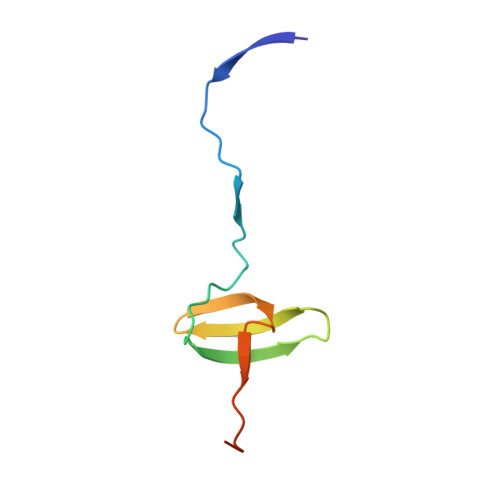The C-Terminal SH3 Domain of Crkl as a Dynamic Dimerization Module Transiently Exposing a Nuclear Export Signal.
Harkiolaki, M., Gilbert, R.J., Jones, E.Y., Feller, S.M.(2006) Structure 14: 1741
- PubMed: 17161365
- DOI: https://doi.org/10.1016/j.str.2006.09.013
- Primary Citation of Related Structures:
2BZX, 2BZY - PubMed Abstract:
CRKL plays essential roles in cell signaling. It consists of an N-terminal SH2 domain followed by two SH3 domains. SH2 and SH3N bind to signaling proteins, but the function of the SH3C domain has remained largely enigmatic. We show here that the SH3C of CRKL forms homodimers in protein crystals and in solution. Evidence for dimer formation of full-length CRKL is also presented. In the SH3C dimer, a nuclear export signal (NES) is mostly buried under the domain surface. The same is true for a monomeric SH3C obtained under different crystallization conditions. Interestingly, partial SH3 unfolding, such as occurs upon dimer/monomer transition, produces a fully-accessible NES through translocation of a single beta strand. Our results document the existence of an SH3 domain dimer formed through exchange of the first SH3 domain beta strand and suggest that partial unfolding of the SH3C is important for the relay of information in vivo.
- Cancer Research UK Cell Signalling Group, Weatherall Institute of Molecular Medicine, University of Oxford, Oxford OX3 9DS, United Kingdom.
Organizational Affiliation:
















